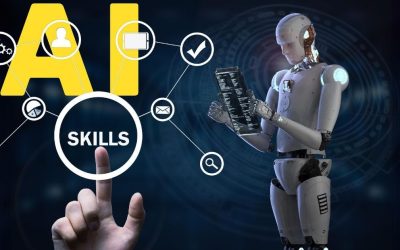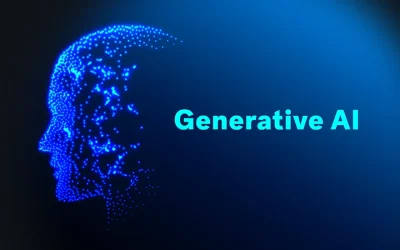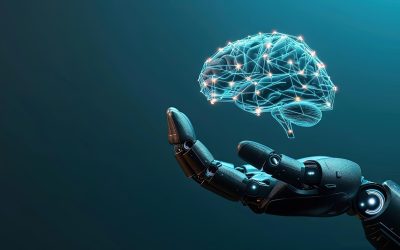Introduction
Adaptive agents are revolutionizing the way tasks are performed in artificial intelligence (AI). These intelligent systems are designed to learn, evolve, and respond dynamically to changing environments, making them invaluable for solving complex, real-world problems. Unlike static systems that operate within rigid parameters, adaptive agents can analyze diverse data, adjust their strategies, and improve performance over time. In today’s interconnected world, multi-modal tasks that require different types of data integration such as images, text, audio, and video are becoming popular. From virtual assistants that understand voice commands and text inputs to autonomous vehicles that process sensor and GPS data, the ability to handle multiple modalities is essential for achieving efficiency and accuracy. The concept of the agentic ecosystem provides a framework where adaptive agents collaborate and operate as part of a larger, interconnected system. This synergy amplifies their capabilities, enabling them to perform more sophisticated tasks and deliver impactful results across industries. In this article, we explore the foundations of adaptive agents, their role in multi-modal tasks, and how to build them within the agentic ecosystem.
What Are Multi-Modal Tasks?
Multi-modal tasks involve processing and integrating multiple data types such as images, audio, video, and text -to perform complex analyses or actions. Unlike traditional tasks that rely on a single type of input, multi-modal tasks use diverse data sources to capture a more holistic understanding of the problem at hand.
For example, a video conferencing platform with real-time transcription combines audio (speech) and text (captions) for a seamless communication experience. Similarly, autonomous vehicles utilize sensor data, visual inputs, and GPS coordinates to make real-time driving decisions. These tasks exemplify how combining multiple data types enhances the functionality and accuracy of AI systems.
Why Multi-Modal Capabilities Are Crucial in Today’s AI-Driven Applications
In the AI era, multi-modal capabilities have become indispensable. Real-world environments are rarely one-dimensional; they require systems to analyze and respond to diverse information simultaneously. Multi-modal AI enhances user experiences, improves decision-making, and enables applications that were once thought impossible. For example:
- Healthcare: Diagnose diseases by integrating patient history (text), medical imaging (visual), and lab results (numerical).
- Customer Support: Chatbots analyze text queries and voice tones for improved customer interaction.
- Media Analysis: Generate descriptive captions for images and videos to enhance accessibility.
Challenges of Multi-Modal Tasks
Despite their potential, multi-modal tasks pose significant challenges:
Handling Different Types of Data
Each modality comes with its own format, structure, and characteristics. Text data may require natural language processing (NLP), while images demand computer vision techniques. Processing these diverse data types in a unified manner is a complex task.
Ensuring Smooth Integration and Processing
Integrating multiple data streams into a cohesive system often requires sophisticated architectures. Maintaining synchronization, avoiding data conflicts, and ensuring compatibility between modalities demand advanced technical solutions. By addressing these challenges, AI systems can unlock the full potential of multi-modal tasks, driving innovation across industries.
The Core Components of an Agentic Ecosystem
Modular Design of Agents
Adaptive agents are built with modularity in mind, meaning they consist of specialized components or modules responsible for specific tasks. For example, a perception module might handle data input from sensors, while a reasoning module processes the data to make decisions. This modular design ensures scalability and flexibility, enabling agents to adapt to diverse tasks and environments.
ML and AI Intergration
Machine learning (ML) and artificial intelligence (AI) are the backbone of the agentic ecosystem. ML models, such as transformers and neural networks, allow agents to interpret multi-modal data efficiently. For instance, a model trained on text and image data can simultaneously analyze product reviews and photos to improve e-commerce recommendations.
Collaboration in the Ecosystem
In the agentic ecosystem, agents do not operate in isolation. Instead, they collaborate with other agents and systems to achieve shared goals. For example, in a smart home setup, a temperature control agent can communicate with lighting and security agents to optimize comfort and safety.
These components collectively enable adaptive agents to thrive within the agentic ecosystem, facilitating seamless operations in multi-modal environments.
Building Adaptive Agents
Key Features of Adaptive Agents
Adaptive agents are AI systems designed to dynamically respond to evolving situations and perform complex tasks with precision. Their defining features include:
Learning from Experience
Adaptive agents continuously learn and improve through interactions with their environment. Using techniques like reinforcement learning and supervised training, they refine their responses over time. For example, a customer support chatbot learns to handle diverse queries more effectively based on previous conversations, improving user satisfaction.
Real-Time Decision-Making
In fast-paced scenarios, adaptive agents make decisions instantly by analyzing real-time data. Autonomous vehicles, for example, process sensor inputs, visual data, and traffic conditions in milliseconds to make navigation choices. This capability ensures responsiveness and reliability in critical applications.
Adjusting to New Environments and Task Requirements
Adaptive agents are highly flexible, allowing them to operate in dynamic environments. Whether deployed in different industries or tasked with new objectives, they adjust their strategies by learning context-specific behaviors. For example, an AI agent used in finance can shift from fraud detection to customer analytics with minimal reprogramming.
Tools and Frameworks
Building adaptive agents involves using robust tools and libraries:
- Popular Tools: TensorFlow and PyTorch provide comprehensive frameworks for designing, training, and deploying machine learning models.
- Specialized Libraries: Hugging Face enables multi-modal NLP tasks, while OpenCV supports advanced image and video processing. These tools simplify complex integrations and optimize performance.
Design Principles
When designing adaptive agents, key principles include:
- Scalability: Agents should handle increasing data volumes and expand functionality without performance degradation.
- Flexibility: Modular architectures allow easy updates and adaptability to new tasks.
- Robustness: Ensuring reliability under varying conditions minimizes errors and enhances user trust.
- Balancing Autonomy with Control: While agents should act independently, incorporating human oversight ensures ethical and accountable operations.
Practical Applications of Adaptive Agents in Multi-Modal Tasks
Adaptive agents have revolutionized multiple industries by harnessing the power of multi-modal data. Their ability to integrate and process diverse information sources enables groundbreaking applications across domains.
Healthcare
The healthcare sector greatly benefits from adaptive agents, particularly in diagnostics and treatment.
- Multi-Modal Analysis of Patient Data: Agents combine clinical records, text (patient history), and imaging (X-rays, MRIs) to provide a holistic view of a patient’s condition. The analysis aids in accurate diagnoses and personalized treatment plans.
- AI-Assisted Diagnostics and Treatments: Adaptive agents can identify anomalies in medical imaging while cross-referencing symptoms from clinical notes, significantly improving early disease detection and tailored therapies. For instance, they assist oncologists in spotting cancerous growths by analyzing radiological scans alongside genetic markers.
Customer Service
Adaptive agents enhance customer interactions, making services more efficient and user-friendly.
- Chatbots Combining Text and Voice Inputs: Intelligent bots integrate spoken and written queries to provide seamless customer support. For example, a virtual assistant can transcribe customer speech and generate text-based responses, improving accessibility and engagement.
- Personalized Recommendations: By analyzing user preferences through text reviews, browsing history, and visual product data, agents deliver highly targeted product or service recommendations, boosting customer satisfaction.
Autonomous Systems
Adaptive agents power complex autonomous operations.
- Self-Driving Cars: These vehicles process real-time video feeds, sensor data, and navigation inputs to make split-second decisions, ensuring safety and efficiency. They adjust to changing traffic, weather, and road conditions dynamically.
- Robotics in Warehouse Automation: Robots equipped with adaptive agents use visual data (camera inputs) and sensor readings to identify, pick, and place items, optimizing inventory management and logistics.
Creative Applications
The fusion of adaptive agents with creativity has opened new possibilities.
- Generating Art, Music, or Video: Adaptive agents synthesize inputs like images, audio samples, and text prompts to create original content. For example, AI systems can compose music by blending melody patterns with cultural themes or generate videos by integrating scripts and visuals.
- Gaming and Virtual Reality (VR): Agents enhance user experiences by adapting storylines and environments based on player actions. They process real-time user feedback, creating immersive and personalized gaming or VR interactions.
Challenges in Building Adaptive Agents
While adaptive agents are pivotal for solving complex multi-modal tasks, their development poses significant challenges across technical, ethical, and scalability dimensions.
Technical Challenges
- Data Integration Across Modalities: One of the foremost challenges is integrating heterogeneous data types like text, images, audio, and video. Each modality has unique characteristics, requiring specialized processing techniques. For instance, combining natural language processing for text with computer vision for images demands advanced architectures and alignment strategies. Misaligned or incomplete integration can degrade agent performance.
- Ensuring Agent Performance in Real-Time Tasks: Adaptive agents must process multi-modal inputs swiftly to make real-time decisions. Applications like autonomous vehicles and AI-powered customer support require low-latency responses. Achieving this level of performance involves optimizing models and ensuring efficient communication between system components, which can be computationally intensive.
Ethical and Social Concerns
- Bias in Multi-Modal Data: Multi-modal datasets often inherit biases from their sources, leading to skewed outputs. For example, facial recognition systems might perform poorly on underrepresented demographics due to imbalanced training data. Addressing these biases is essential to prevent discrimination and ensure fairness.
- Ensuring Privacy and Security in Sensitive Tasks: Tasks involving sensitive data, such as healthcare or surveillance, raise privacy and security concerns. Adaptive agents must comply with strict data protection standards, ensuring that personal information is not exposed or misused. Designing agents that respect user privacy while maintaining functionality is a critical challenge.
Scalability Issues
- Managing Computational Costs: Adaptive agents processing multi-modal tasks often require substantial computational resources, including advanced GPUs and cloud infrastructures. These costs can become a bottleneck, particularly for smaller organizations or large-scale deployments. Efficient algorithms and resource optimization are key to overcoming this hurdle.
- Building Agents That Scale Across Diverse Applications: Scaling adaptive agents to operate in varied domains or industries is challenging. For instance, an agent optimized for customer service may require significant re-engineering to perform in autonomous systems. Designing modular and flexible architectures can help enable seamless adaptation across use cases.
Future Trends in the Agentic Ecosystem
The future of the agentic ecosystem is shaped by rapid advancements in AI and machine learning, enhanced integration with emerging technologies, and a growing emphasis on ethical AI practices.
Advancements in AI and ML
- Emerging Technologies: Breakthroughs in technologies like transformers have transformed the processing of multi-modal data. These models, such as OpenAI’s GPT or Google’s Vision Transformers, excel in understanding and generating text, images, and other data types simultaneously. Future iterations promise even greater adaptability and efficiency in multi-modal tasks.
- Improved Algorithms for Better Adaptability: Continuous innovation in machine learning algorithms is enabling adaptive agents to learn and generalize across diverse environments. Techniques like meta-learning and few-shot learning will allow agents to adapt to new tasks with minimal data, enhancing their utility in dynamic and unpredictable settings.
Integration with the Internet of Things (IoT)
- Collaborative Ecosystems in Smart Environments: As IoT devices become ubiquitous, adaptive agents will increasingly collaborate within connected ecosystems. For example, in smart homes, agents could synchronize appliances, lighting, and security systems based on user preferences. Similarly, smart cities could leverage these agents to optimize traffic flow, manage utilities, and ensure public safety.
- Examples in Smart Industries: In industrial applications, agents integrated with IoT sensors can revolutionize operations by predicting equipment failures, optimizing workflows, and ensuring resource efficiency. These advancements will make industries more resilient and sustainable.
Ethical AI Practices
- Increasing Focus on Responsible AI: The growing deployment of adaptive agents raises concerns about fairness, accountability, and transparency. Future trends will emphasize responsible AI practices to mitigate risks such as bias and misuse. This includes developing interpretability frameworks to ensure that agent decisions are explainable and justifiable.
- Frameworks to Address Ethical Dilemmas: AI governance frameworks and industry standards will play a pivotal role in guiding the development and deployment of adaptive agents. These frameworks will address challenges like privacy preservation, data security, and equitable access to AI benefits.
Conclusion
Building adaptive agents is crucial for addressing the growing complexity of tasks in today’s AI-driven world. These agents enable systems to learn from experience, make real-time decisions, and seamlessly adjust to dynamic environments. By incorporating multi-modal capabilities, adaptive agents can handle diverse data types, allowing them to tackle challenges across industries and improve efficiency in ways previously unimagined.
The agentic ecosystem plays a transformative role in shaping how adaptive agents collaborate, learn, and evolve in interconnected environments. As industries continue to adopt these agents, we can expect significant advancements in healthcare, customer service, autonomous systems, and creative applications. This ecosystem will unlock new opportunities for innovation, driving efficiency and enhancing user experiences across all sectors.
As we move forward, it is essential to encourage exploration and innovation in multi-modal AI solutions. By addressing existing challenges and embracing emerging technologies, the potential for adaptive agents to revolutionize industries is limitless. The future of AI is bright, and with thoughtful development, adaptive agents will continue to play a central role in shaping our technological landscape.



